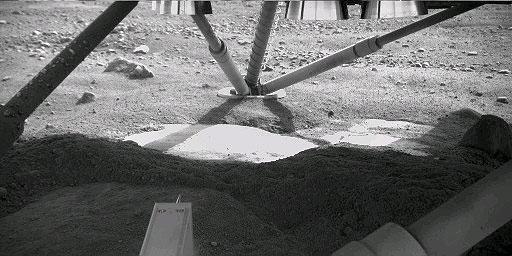
All these worlds are yours except Europa.

Haunting the Web Since 1999


“In April, the world will celebrate the quinquagenary of SETI, the search for extraterrestrial intelligence, so it seems a good time to take stock of the silence. Three new books tackle the issue in three different ways. One, an immensely readable investigation of the SETI enterprise (with a surprising conclusion); the second, a technical guide to what we should be looking for and how; and the third, a left-field argument that the alien question has already been answered.“
In New Scientist, Michael Hanlon surveys three new books about the continuing search for alien life, and attempts to grapple with the Fermi paradox.”Today it is rare to meet an astronomer who doesn’t believe that the universe is teeming with life. There is a feeling in the air that light will soon be shed on some of science’s most fundamental questions: is Earth’s biosphere unique? Do other minds ponder the universe?“
“‘We’ve looked at far, far fewer than 10 million stars since 1960, and so we really can’t say anything worthwhile yet about whether or not intelligent life is out there,’ Drake said. ‘Given our capabilities now, we might have something useful to say one way or another in 25 years.'”
In the wake of all these new planets, the WP takes a gander at the new and improved SETI program. “‘We’re finding new extra-solar planets every week,’ she said. ‘We now know microbes can live in extreme environments on Earth thought to be impossible for life not very long ago, and so many more things seem possible in terms of life beyond Earth.’”

Update: “‘I was instantly excited because the glint reminded me of an image of our own planet taken from orbit around Earth, showing a reflection of sunlight on an ocean,’ Stephan said. ‘But we also had to do more work to make sure the glint we were seeing wasn’t lightning or an erupting volcano.’” Might be some more water closer to home too: NASA confirms liquid on Saturn’s moon of Titan.

“The amount of water they found in the plume was a couple of hundred kilograms in total, but that indicates there is a lot more still lying on the surface. They don’t know how much exactly just yet.” (As we found out recently, the same might also hold true of Mars.)
“‘The full understanding of the LCROSS data may take some time. The data is that rich,’ said Colaprete. ‘Along with the water in Cabeus, there are hints of other intriguing substances. The permanently shadowed regions of the moon are truly cold traps, collecting and preserving material over billions of years.‘” I’m very reminded of James Hogan’s Inherit the Stars right now. Also, it’s probably about time to start taking lunar exploration a bit more seriously again, eh?
“‘We would have never dreamed you would find a rocky planet so close,’ he said. ‘Its year is less than one of our days.'” Astronomers discover the first rocky planet outside our solar system in CoRoT-7b.
But don’t prep the colony ship just yet: “It is so close to the star it orbits ‘that the place may well look like Dante’s Inferno, with a probable temperature on its ‘day face’ above 3,600 degrees Fahrenheit (2,000 degrees Celsius) and minus-328 degrees Fahrenheit (minus 200 degrees Celsius) on its night face,’ said Didier Queloz of Geneva Observatory in Switzerland, the project leader.” Eh, we’ll work with it.
“‘There’s nothing about it that would preclude life. In fact, it seems very friendly,’ said mission scientist Samuel P. Kounaves of Tufts University. ‘We were flabbergasted.‘” Hope y’all like asparagus: Early tests by the Mars Phoenix seem to indicate that the Martian soil is more nutrient-rich than anyone expected. “Carbon-based organic material, however, has not been found and may be impossible to detect with the equipment now on Mars.“
“It’s with great pride and a lot of joy I announce today we have found proof that this hard material really is water ice and not some other substance.” Signs have pointed in that direction for awhile now, and particularly since the Phoenix landed. But now, it seems we have really, truly, definitively found ice on Mars. “The next questions to answer are what chemicals, minerals and organic compounds might be mixed in with the water. ‘Just the fact that there’s ice there doesn’t tell you if it’s habitable,’ Smith said. ‘With ice and no food it’s not a habitable zone. We don’t eat rocks — we have to have carbon chain materials that we ingest into our bodies to create new cells and give us energy. That’s what we eat and that’s what has to be there if you’re going to have a habitable zone on Mars.‘”
